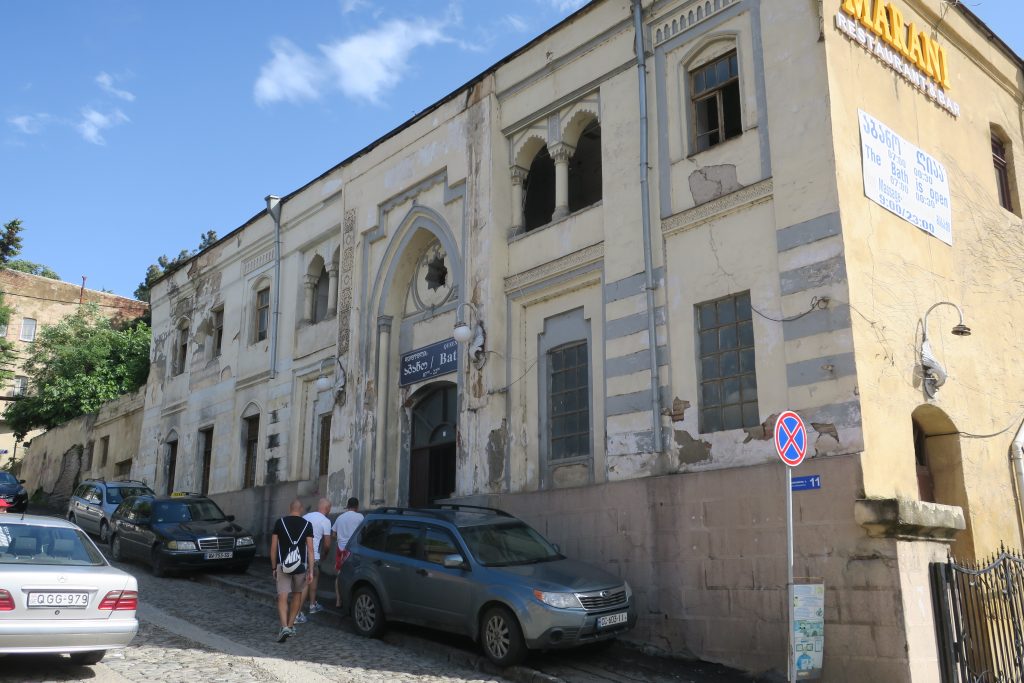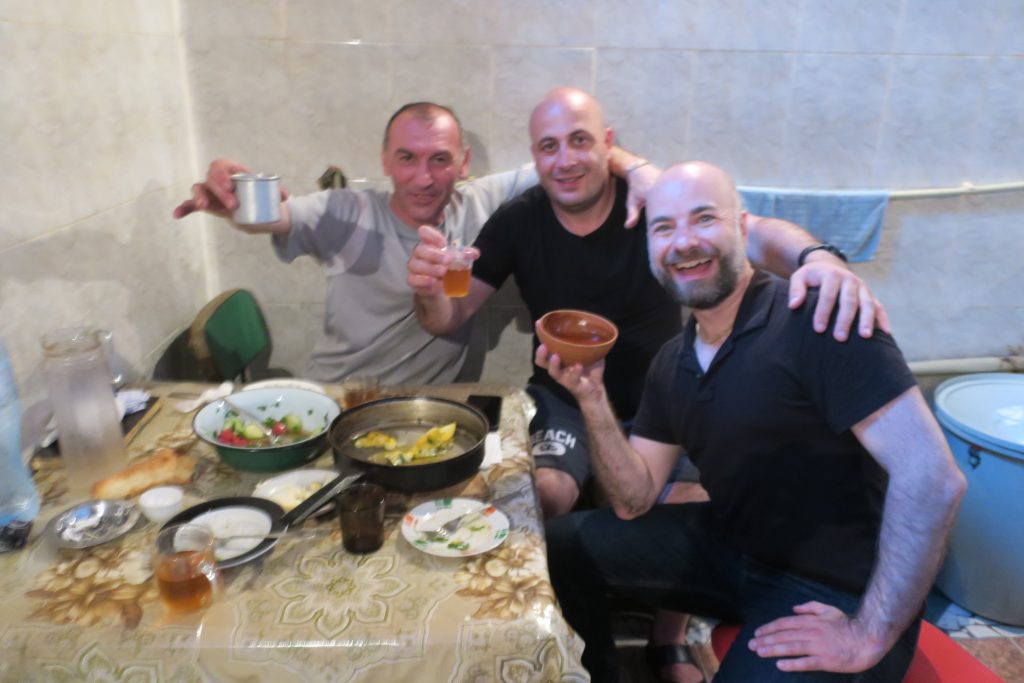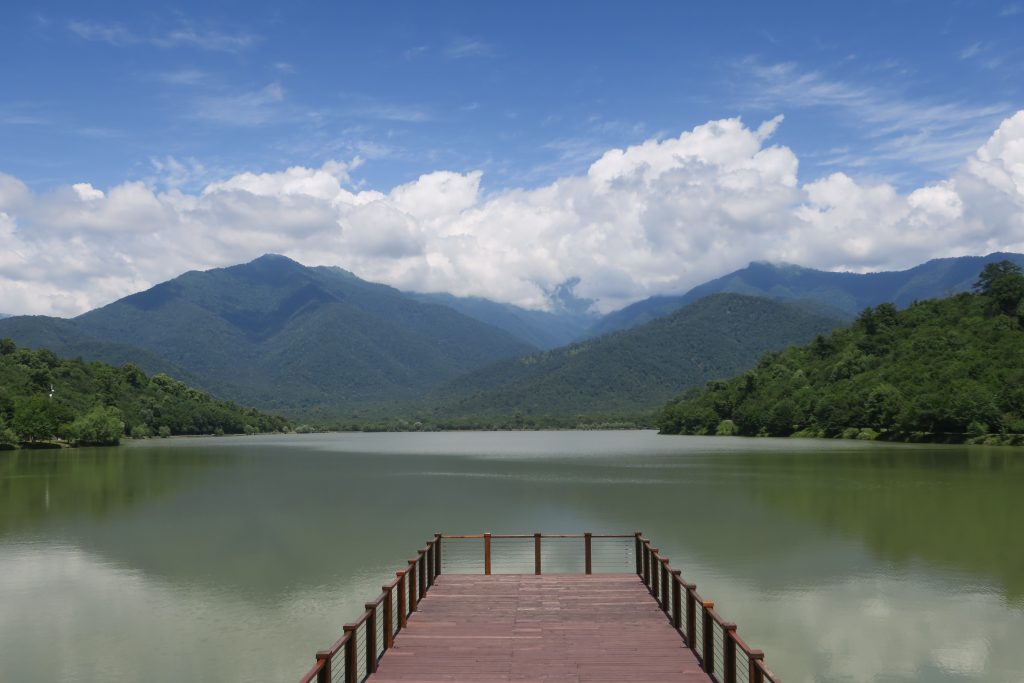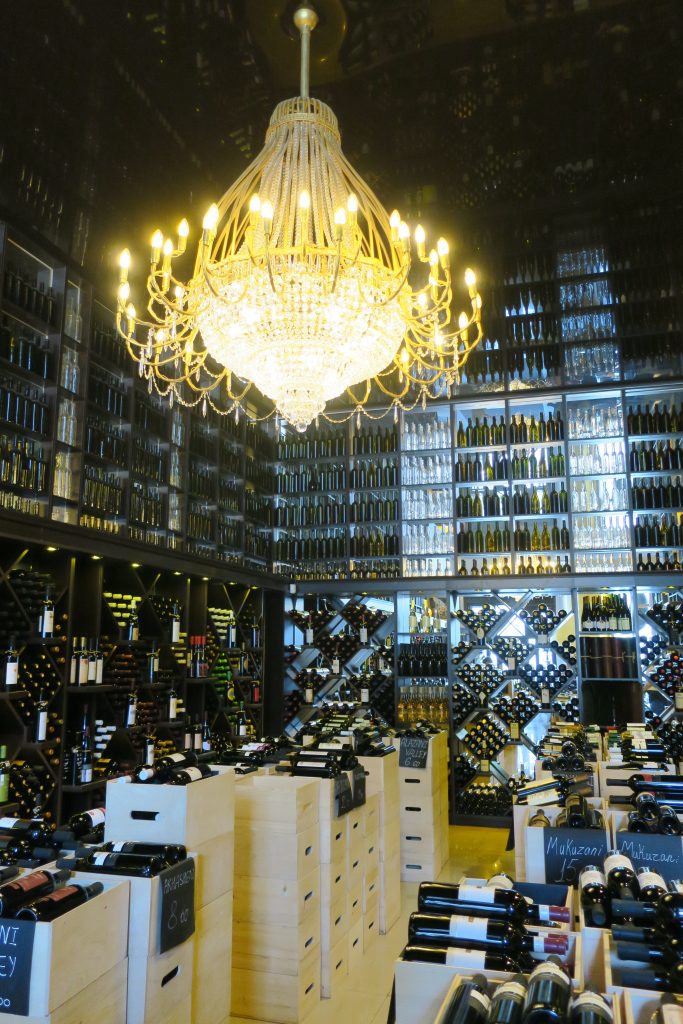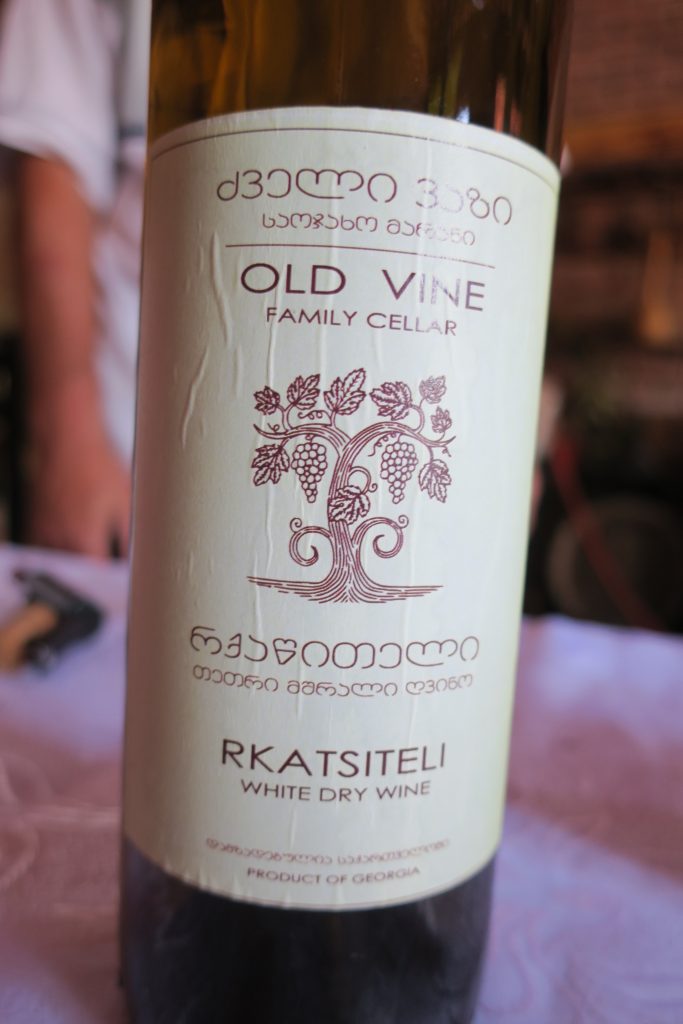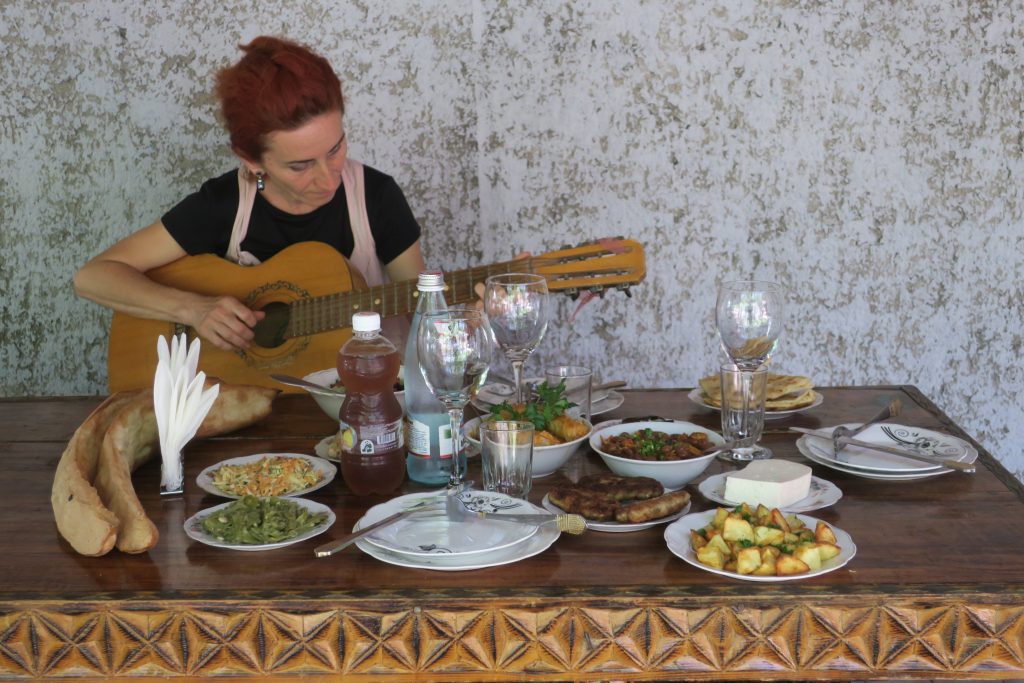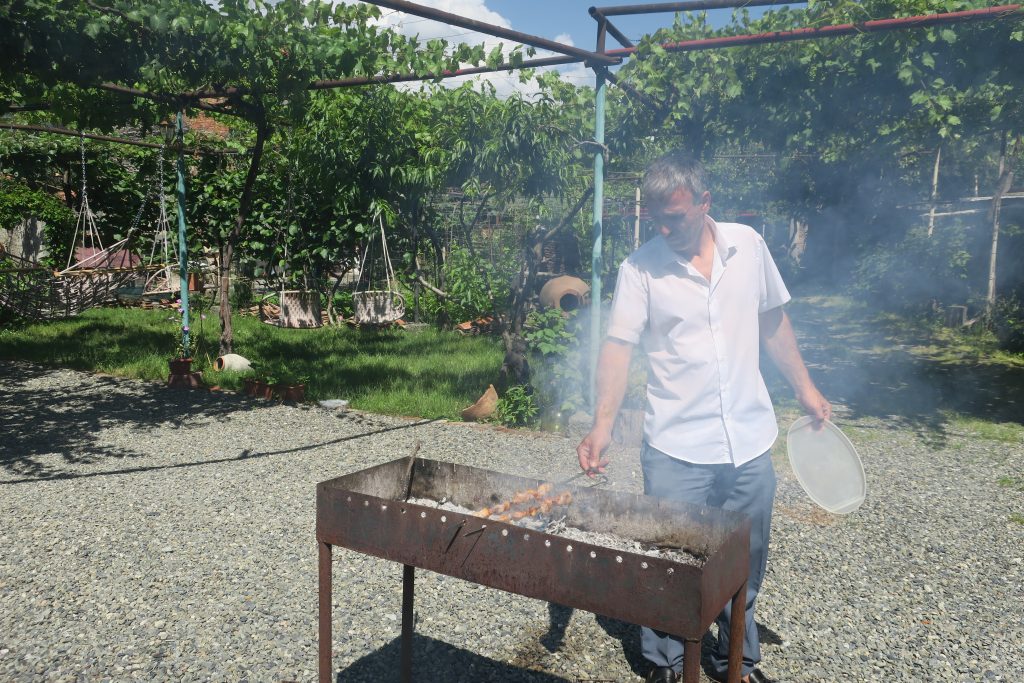Sulphur Bath Masseur Wine
I didn’t plan on ending up drunk in a grotty Tbilisi locker room, making toasts to the glories of Georgia. But then, I suppose one never does.
I ended up in that locker room because what I thought would be a two-hour river cruise through the center of Tbilisi, Georgia’s capital city, turned out to be just 30 minutes. What to do with that extra time? Exhausted from the previous day’s hiking in the Caucasus Mountains, I decided that a sulphur bath soak would be just the thing. I’d had a lovely experience at the freshly renovated Chreli Abano, a historic sulphur bath sparkling with mosaics, but it was expensive and a little tame.
Instead, I sought out a bath still frequented by local people. A sulphur bath with public pools. A bath that doesn’t take credit cards. A bath that was a little more of an adventure.
Most of the bathhouses in the Abanotubani neighborhood cater almost exclusively to tourists nowadays, and I had trouble finding one with public facilities. Front desk clerks kept pointing me farther and farther up the street, until there it was, exactly what I was looking for: The Queen’s Bath, housed in a once-grand Persian-style building with crumbling stucco. A bald gentleman sitting outside the entrance greeted me. I later learned his name was GaGa (no relation to Lady).
I said that I wanted a scrub and massage — Tbilisi’s sulphur baths are reminiscent of Turkey’s hammams — and he understood, despite my almost total lack of Georgian. After taking me to the counter to pay, he escorted me to the locker room, which hasn’t seen an update since before I was born. But no matter — a massive attendant of about 70 opened a locker for me, and I undressed and put on my flip-flops (always bring flip-flops when you travel). I was about to wrap the sheet-like towel I’d received around my waist, but the attendant took it from me, tossed it in my locker and locked the door. Towels, it seems, were not allowed in the bath!
GaGa, who was to be my masseur, led me to the showers, a row of narrow-gauge PVC pipes mounted on the wall, and I had a rinse. He pointed to the turbid sulphur bath, indicating I should have a soak before my scrub. In the pool were two more gentlemen. One rested his arms on the edge and faced away from the center, and another, a zaftig 60-something, sat facing me. He spoke.
“I don’t understand,” I said, raising my hands in the universal gesture of confusion. He pointed to himself and said his name, Rahib, and I did the same.
“Amerikani!” he exclaimed. I nodded. “Azeri, Azeri,” he said pointing to himself, indicating that he came from neighboring Azerbaijan.
“Ah, very nice.” I said, smiling and nodding. That was an error.
Rahib scooted across the pool and sat next to me. He then took my hand and attempted to place it… in an inappropriate place. I withdrew, saying politely but firmly, “No, no. No thank you.” And I scooted myself to the other side of the pool.
Unfortunately, Rahib did not wish to take no for an answer, and he followed me. I moved towards the pool’s exit — all the while, mind you, the other man in the pool hasn’t moved a muscle — and Rahib continued his pursuit. “Muslim! Muslim!” he said, pointing to himself, with a tone that seemed to suggest that because he was a Muslim, it was great idea for me to touch his junk. I felt unpersuaded.
Fortunately, GaGa was ready to give me my scrub, and I escaped the randy Azeri. I laid down on a marble plinth topped with a slimy piece of black rubber matting. I felt concerned about what might be living on/in the mat, but GaGa got to work and gave me the scrub to end all scrubs, followed by a thorough soaping with a fluffy mitt and an ocean of suds. I arose from the plinth feeling thoroughly restored, refreshed, and sparkling clean. GaGa suggested another soak, but I decided a nice cool shower was a better idea. I’d had enough of the sulphur pool.
I returned to the locker room, thirsty but fully relaxed. I had just finished dressing when GaGa approached holding a small tumbler of a dark red liquid. “Drink,” he said. I took a big gulp, relishing the idea of some cool cherry juice — cherries were in season — and nearly gagged. It was most definitely not cherry juice.
Three men at a table in the corner of the locker room laughed. “Ha ha! No like wine! Ha ha ha!”
I composed myself after the initial surprise, and said, “Ha! I like! I like! I like wine very much.” I pointed to the glass. “Saperavi?” Saperavi, Georgia’s signature red grape, is unusual in that both its flesh and its skin are dark. Most red wine grapes have dark skins but light-colored flesh. It has the capability to make rich, structured wines full of fruit and sour-cherry acids. Some Saperavis can be absolutely sensational. It’s even started to catch on in New York’s Finger Lakes.
“Yes! Saperavi!” they exclaimed, surprised I knew what it was. “Come. Come! Sit!” They graciously invited me to join them at their table, where GaGa had just set out a jug of Saperavi, a salad of tomato, cucumber and basil, and a skillet with an egg dish resembling a Spanish tortilla. How could I refuse? GaGa refilled my glass.
“Thank you! It’s very good,” I said, feeling rather out of place in that little old locker room, at a table with people who spoke little to no English.
GaGa looked pleased. “I make,” he responded. Many Georgians make their own wine, because commercial wine is simply too expensive to drink in any quantity. And Georgians like to drink in quantity.
“You made this?” He nodded. I took another sip. “Wow! I mean, it’s really very, very good. It’s got lots of dark fruit, with plenty of juicy acids to balance, and there’s focus! The white pepper spice has great focus to it, and the tannins are big but really well-integrated. Fantastic!” In my enthusiasm, I had forgotten about his limited English, but he seemed to understand.
“Eat, eat. I also make,” he said, pointing to the salad and skillet. The richness of the eggs with potatoes worked beautifully with the forceful wine.
The two other gentlemen sitting with us, Giorgi and Ilia, also smiled at my description of the wine. As GaGa refilled my glass again, Giorgi, the younger of the two, brought out a clay bowl. I had an idea of what was happening. At a supra, a traditional Georgian feast, a tamada takes the role of toastmaster, who gets the ball rolling by saying something heartfelt or funny or poetic and drinking a hearty draught from a glass, bowl or drinking horn. He or she then passes the bowl on, so that other guests can make their own toasts. We may have been in a poorly maintained locker room at a little table with just bread, salad and eggs, and naked men periodically squeezed by, but Giorgi had just turned our gathering into a little supra.
GaGa poured some Rkatsiteli — which he had also made himself — into the bowl for Giorgi. Rather touchingly, he toasted to America and to friendship, and downed the wine. The bowl came to me, and I toasted (as I had once before) to the beauty of Georgia and the joy of its hospitality. The Rkatsiteli had ample stone fruit flavor, a zip of green apple acid and no shortage of tannins, but the clay bowl helped tame them. If you have a wine that’s too tannic, you might try drinking it out of a clay bowl instead of decanting! GaGa and Ilia also made toasts, and once again the bowl came to me.
“Many Americans don’t know much about Georgia, but this country is absolutely amazing,” I said, probably a little too loudly. “I mean, look at this. GaGa just met me. Giorgi and Ilia, you didn’t know me at all, and yet you invited me to sit at this table to share your food and wine. This is… this is something that could only happen here in Georgia. Georgia is amazing, and you guys are amazing, and I love this place,” I said, with most of my vocabulary lost to the wine. GaGa, Giorgi and Ilia smiled and raised their glasses, and I downed a mercifully half-filled bowl of GaGa’s thoroughly delicious homemade Rkatsiteli.
I may have slurred a bit when I said it, but I meant every word. Georgia is amazing, and I do love that place. Thank you, GaGa, Giorgi and Ilia, for an afternoon I’ll never forget.



